It’s been nearly 50 years since the Equal Pay Act, yet as the gender pay gap has recently revealed, women are still being paid less than men for doing the same job, and are still not being promoted into the upper echelons in any significant numbers. But why does this matter, and how does embracing diversity help business? Helen Arnold went along to the recent Women of the Vine & Spirits conference in London to find out more.
Until relatively recently, the UK wine industry was renowned for being a bit of an old boy’s club, dominated by upper middle-class, middle-aged red-betrousered chaps with pinky rings who all went to the same public school together. Women simply didn’t get a look in, unless they were the secretary or PA.
Thankfully times have changed, and largely for the better. But despite the fact that it’s been nearly 50 years since the introduction of the Equal Pay Act of 1970, many women are still being paid less than their male colleagues for doing the same job, and repeatedly banging their heads against the glass ceiling, resulting in most of the top jobs still going to a disproportionate number of men – many of whom are no better qualified than their frustrated female counterparts.
The statistics make for depressing reading. The fact that there are as many men called Dave as women at CEO level of the top 10 FTSE companies according to the Chartered Institute of Personnel & Development is bad enough, despite the fact that just as many women as men express a desire to achieve a top role, according to a study conducted by LeanIn.Org and McKinsey, Women in the Workplace 2017.
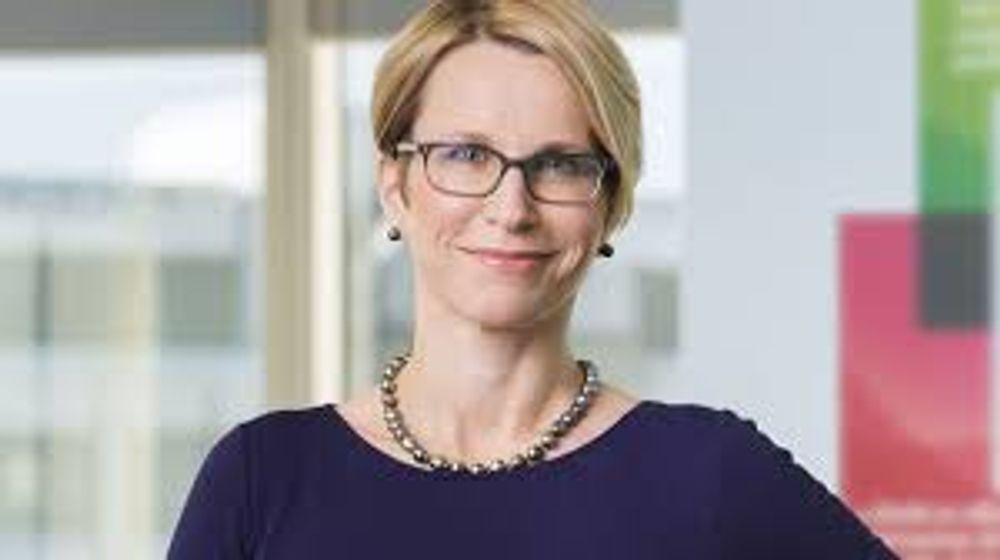
Emma Walmsley, CEO of GlaxoSmithKline, and one of the few women to make it to the very top of the corporate world
Emma Walmsley, the head of pharmaceutical giant GlaxoSmithKline is the only woman to crack the top 25 with a pay packet of £4.9m, ranking 25th, behind several men running much smaller companies, including the top earner Persimmon’s Jeff Fairburn who raked in a whopping £47m last year.
Of course, things have improved enormously in the intervening years, and huge strides have been taken in improving the lot of women and their role in the workplace. But a quick glance at any G7 summit of world leaders, and it is a vast sea of grey men in grey suits dominating the proceedings, with a few lone splashes of colour in the form of Angela Merkel and Theresa May. But these women are the glaring exceptions. In the workplace, managerial roles are hugely dominated by men.
There are no figures regarding gender diversity exclusively within the drinks industry, but there is little reason to think it is a sector that is any better – or worse – represented than any other sector.
Unconscious bias

There are still as many men called Dave as female bosses of FTSE 100 companies
One of the most powerful reasons for the lack of progress is a simple one: we have blind spots when it comes to diversity, and we can’t solve problems that we don’t see or understand clearly. Many employees think women are well represented in leadership when they see only a few. And because they’ve become comfortable with the status quo, they don’t feel any urgency for change. Further, many men don’t fully grasp the barriers that hold women back at work. As a result, they are less committed to gender diversity, and we can’t get there without them.
Much of the problem lies in the fact that people – namely men, who hold most of the top jobs – recruit in their own image, according to Jeremy Lewis, senior inclusion consultant at The People Development Team. Middle aged, middle class white men recruit people just like them, perpetuating the type of people in senior managerial roles.
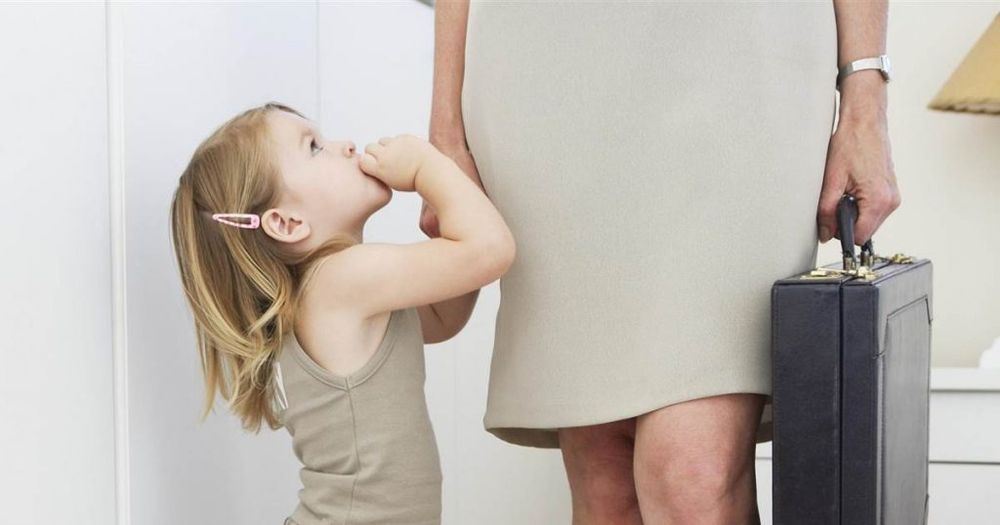
Working women still face the burden of “double shifts”, taking on responsibility for far more housework and childcare than their male counterparts
While many modern men may think they are right-on, often they are paying lip service to equality. The claim to do their fair share of household chores and child care and say they believe that women should have the same opportunities in their careers as men. (According to the Office for National Statistics, British women still do 60% more unpaid work – from laundry to childcare and caring for older relatives – than men).
But all too often unconscious bias kicks in. As the name implies, its something we are unaware of, and we are all guilty of. It’s the tendency amongst humans to stick to what we know, to make instant judgements as to whether someone is in our “tribe” or not. And it’s one reason that women are still being kept out of the top jobs, and keeps the glass ceiling firmly in situ.
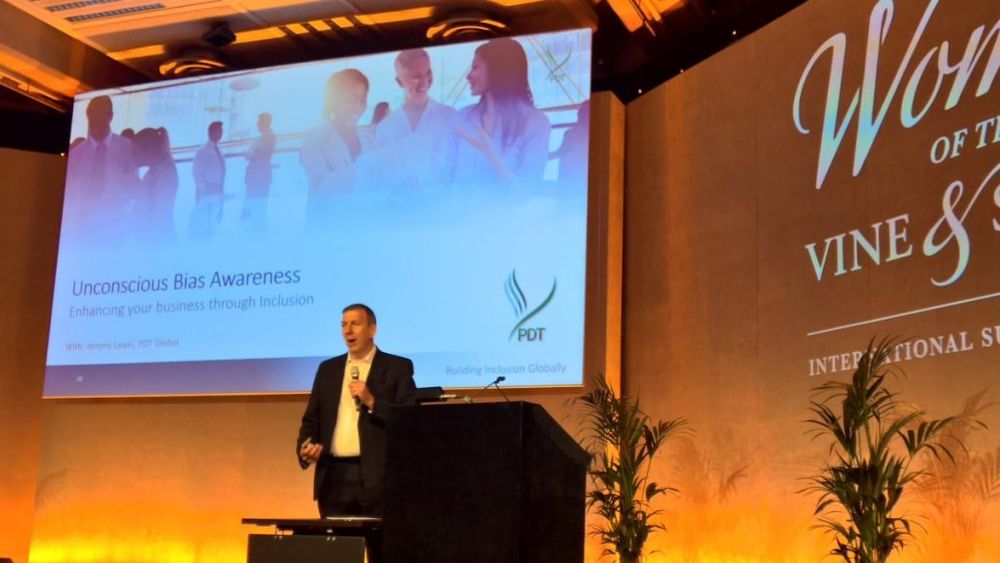
Jeremy Lewis, senior inclusion consultant at the People Development Team, talking about unconscious bias at the Women of the Vine & Spirits conference in London this summer
“There are many men who are disengaged and don’t get how inclusion adds value,” conceded Lewis. “Men will talk about the wider benefits to business, but can’t answer how they benefit personally We need to change the debate.” We have got into bad habits, he says, carrying a mental expectation of how the world should be. When that fails to live up to our expectations, we look for information that supports our beliefs, and when that happens dopamine is released. “Our brains are very good at skewing evidence. We can only process 40 bits of information a second, the remaining bits we file unconsciously. We label people and make conclusions on how they will behave and perform.”
Overcoming unconscious bias may not be easy, but more than possible claims Lewis and the first step is in becoming aware of your inbuilt prejudices. This alone isn’t sufficient in overcoming them, but without that self-knowledge, you won’t get anywhere. “It only takes 30 milliseconds to make a decision about people, while rational thought takes much longer to kick in,” says Lewis. “People ask me, do I have to employ people I don’t like? No, but you need to start liking more people. Recognise as a human being your biases may be showing and you may be missing talent under your nose.”
Gender pay gap
We have read much of the gender pay gap in recent months, with companies employing more than 250 staff being compelled to file the results of this to the government. This reveals that the gender pay gap is alive and well in the UK drinks sector.
At Bibendum, for example, women only made up 18% of those in the top pay quartile, with women’s mean bonuses being nearly 59% lower than men’s. At Accolade Wines, women fared slightly better, accounting for 36% of those in the top pay quartile, and their mean bonuses coming in at 35% less than their male colleagues. And at Majestic Wine just over 28% of those in the top pay quartile are women, with a significant 89% of women there receiving a bonus on a par with their male colleagues.
At Enotria, meanwhile, women’s mean hourly rate of pay is 9.1% lower than their male colleagues, with only 17.5% of those on the top pay grade being women. Diageo slightly fared better, with over 42% of those in the top pay quartile being women. However, despite slightly more women than men being awarded bonuses (91.8% compared to 86.3%), women’s mean bonuses were nearly a quarter less than their male counterparts.
Wherever you look, and whatever industry you analyse, it’s still the same old story. Women command fewer of the top-paying roles, they are consistently paid less than men for the same roles, their bonuses are less than their male colleagues, and women, hardly surprisingly, perceive far more barriers to success than men.
Of course, the gender pay gap is not entirely attributed to gender. Women do make different choices compared to men, largely dictated by the demands of pregnancy, childbirth and bringing up young children. But men are able to have families without it damaging their careers, so some of the choices that women make are dictated to by societal norms, rather than the express decision made by the women.
Misplaced benevolence holding women back
For example, often under the guise of benevolence, companies will withhold opportunities for women, according to PDT’s Jeremy Lewis. He cites the example of a company needing to send an executive to Japan at a moment’s notice to negotiate with a supplier. There is both a man and a woman equally capable of doing the job, but both with ailing ageing parents and a young family to care for. However, the company, mistakenly believing it is acting in the individual’s best interests will more likely say that the woman has family responsibilities, so can’t possibly be expected to jet off to Tokyo at a moment’s notice, while for the man, no such allowances are made.
Lewis says that employees should be able to make up their own minds about these things, and decisions should not be made on their behalf. In fact, he points out, the man may well be less resilient than his female colleague.
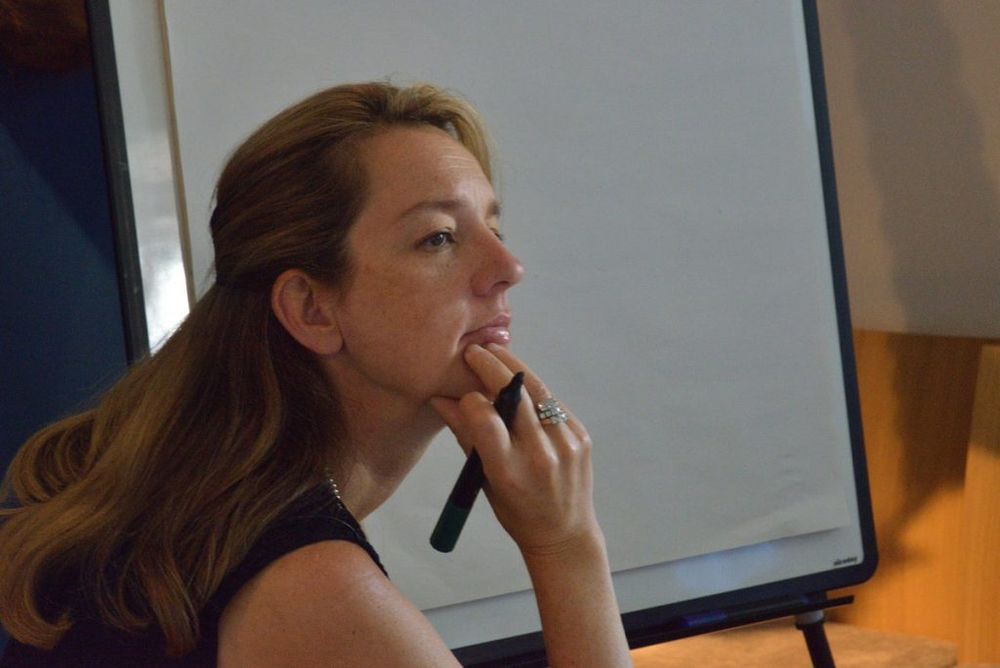
Lulie Halstead, CEO of Wine Intelligence says men are far more prepared to put themselves forward, despite not necessarily possessing the requisite experience or skills
Another factor contributing towards the dominance of men in top jobs is the much cited theory that men are more confident of their abilities – some might say over-confident – compared to women, and study after study has shown that a man who is only 60% qualified for a job will go for it, while a woman who is 95% qualified will still question herself and her fitness for the role.
Clearly this is a societal issue, and not something that can be changed overnight, but nonetheless another factor bearing on the whole issue of gender diversity in the workplace. But it’s something that Lulie Halstead, CEO of market research firm Wine Intelligence has come across time and time again. “It’s always the men who are more likely to be put themselves forward, despite not necessarily fulfilling all the criteria for the job,” she points out. “Women tend to be far more reticent about their abilities.”
Once women are on the track to success, they are still 18% less likely to get promoted than men at the first critical step up to manager, even though it has been shown by the McKinsey study –that 75% of women and 79% of men said they wanted to progress in their careers.
Women face barriers every step of the way, claims McKinsey associate partner Ana Ines Mendy. “Corporate US is not on a path to gender equality,” she says. “At the current rate, it will take more than 100 years to see equality at C-suite level.”
Fewer women than men are externally hired at every stage of the process, she points out: while 73% of appointments at C-suite level amongst men are made externally, this is only true of 27% of women at the same level. And at manager level, 63% of male appointments are made externally as opposed to 37% of women. Even in entry-level roles, 55% of men are recruited externally as opposed to 45% of women.
Maybe part of the problem boils down to aspiration and self-belief. Sadly, fewer women than men believe they will achieve their dream of being a top executive, with 47% of white men aspiring to be a top executive, compared to only 33% of white women, and 64% of black men aiming for the top roles compared to only 44% of black women.
And this is not, as is commonly assumed, because women are too scared to stick their neck out and ask for promotions. Men are simply more likely to get what they want without having to ask. According to the McKinsey survey, 34% of both men and women asked for a promotion, but 17% of men were awarded a promotion without having to ask, compared to only 14% of women.
Growing frustrations
A full 37% of women believe that their gender has played a role in missing out on a promotion or chance to get ahead, compared to only 8% of men, while 39% of women believed that their sex made it more difficult to get a raise, compared to only 15% of men.
This situation is particularly stark for black women says Mendy, pointing out that only 48% of this group believe they have equal opportunity for growth compared to their peers, as opposed to 55% of Asian and Latina women and 59% of white women. Only 29% of women said the best opportunities go to the most deserving candidates, compared to 40% of white women.
Another hurdle holding women back is that they receive less support and advice from managers and senior leaders that typically helps to advance careers. People who receive advice from their managers are statistically more likely to receive a promotion, and 10% fewer women report receiving advice on how to advance than men, while 20% fewer reported regular interaction with senior leadership than men.

Karen Betts, CEO of the Scotch Whisky Association, saw her career take off with the help of a good mentor
The importance of a good mentor in the workplace is something that Karen Betts, the chief executive of the Scotch Whisky Association can attest to. “I have had mentor relationships that became very important to me,” she says.” A good coach will help you when you are stuck with things, and often hold you to account. It took me some years to realize that the world isn’t equal and why mentoring is so important to women. These things come more naturally to men.”
Role models of the lack of them is another factor which makes it more challenging for women to rise to the top. Stephanie MacLeod, master blender at John Dewar & Sons, says that when she joined the drinks industry in the late 1990’s, she didn’t imagine there could be a female master blender. “They had a certain kudos,” she says. “But I was approached to be a master blender, and there is a lesson there for everyone – don’t make assumptions about what you can and can’t do based on your gender.”
However, despite the clear disparity in equal opportunities and outcomes, not every one can see there is an issue, and this is particularly true for men, with nearly half believing that women are well represented in leadership – even where only one in ten senior leaders is a woman. Remarkably, a full third of women agreed with this.
And despite the best efforts of companies, of which 90% claim to make a commitment to diversity, only 52% of their employees agreed. Similarly while 75% of companies said their policies were fair to all people, only 60% of staff concurred.
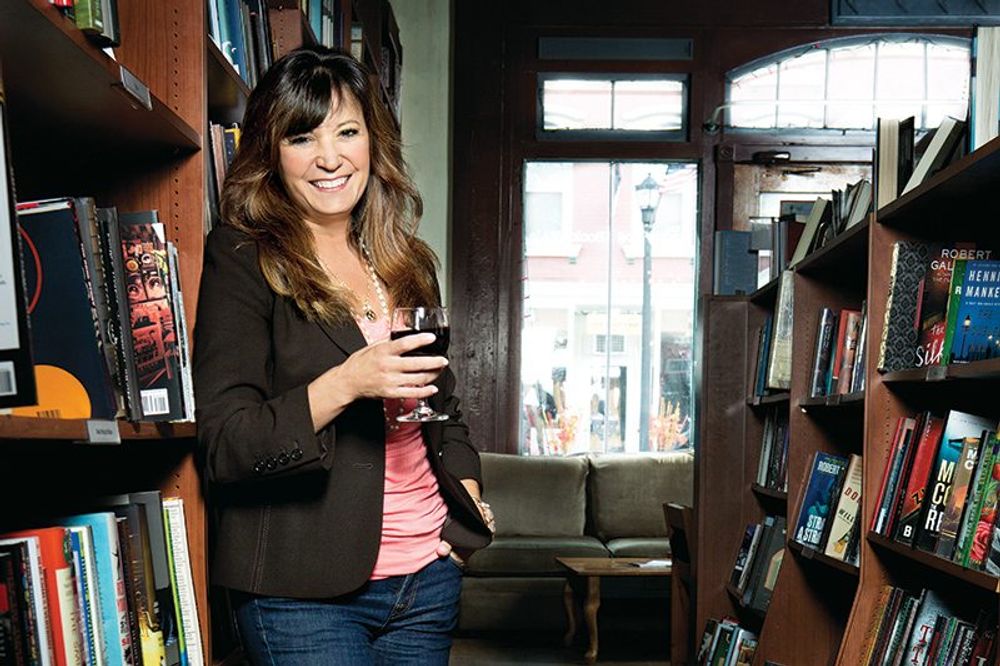
Deborah Brenner, founder and CEO of Women of the Vine & Spirits whose mission is to empower and equip women to further their careers in the drinks industry
While management plays a critical role in companies’ gender diversity efforts, only 42% of male employees surveyed by McKinsey said that gender diversity is a top or important priority amongst managers, while only 37% of female staff thought the same. “In order to make change, it starts at the top,” says Deborah Brenner, CEO and founder of Women of the Vine & Spirits, an organisation which is dedicated to the advancement of women in the drinks sector.
Therefore, giving managers visibility into the scope of the problem and the tools they need to succeed is vital. Managers should be taught why gender diversity is important, develop formal sponsorship and mentorship programmes and create an expectation amongst managers to raise gender diversity and address issues with their teams.
To make matters worse, few corporate outfits track metrics or set targets. For example, 63% of companies according to McKinsey tracked metrics for attrition, but only 12% actually set any targets as well. Similarly, 54% of respondents tracked metrics for representation in promotions, but only 18% actually set targets too.
And it would appear that employees and managers would both benefit from more training, with only 47% of the former and 30% of staff saying they knew what to do to improve gender diversity in their organization, and 30% of managers regularly addressing gender-biased language and behaviour when it occurs.
How to improve gender diversity?
To tackle these issues head on, McKinsey advises companies to make gender diversity a priority amongst senior leadership and get them on board. Top performing companies, they claim, are more likely to have dedicated programmes to improve promotion rates for women So they advise articulating a business case and backing it up with numbers, while having an open and transparent dialogue. And create accountability, with meaningful but achievable targets, and hold mangers to senior leaders to account.
When hiring staff, blind resume screening helps to reduce bias, unconscious or otherwise, while regular personalized performance reviews are advised. Top performing companies are also more likely to offer extended parental leave and onsite childcare.
Business leaders should be starting a conversation up and down, about why diversity matters, while senior men should be asked to sponsor at least one junior woman on the team. And individuals should not be afraid to call out bias when they see it – it only takes one voice, after all.










































